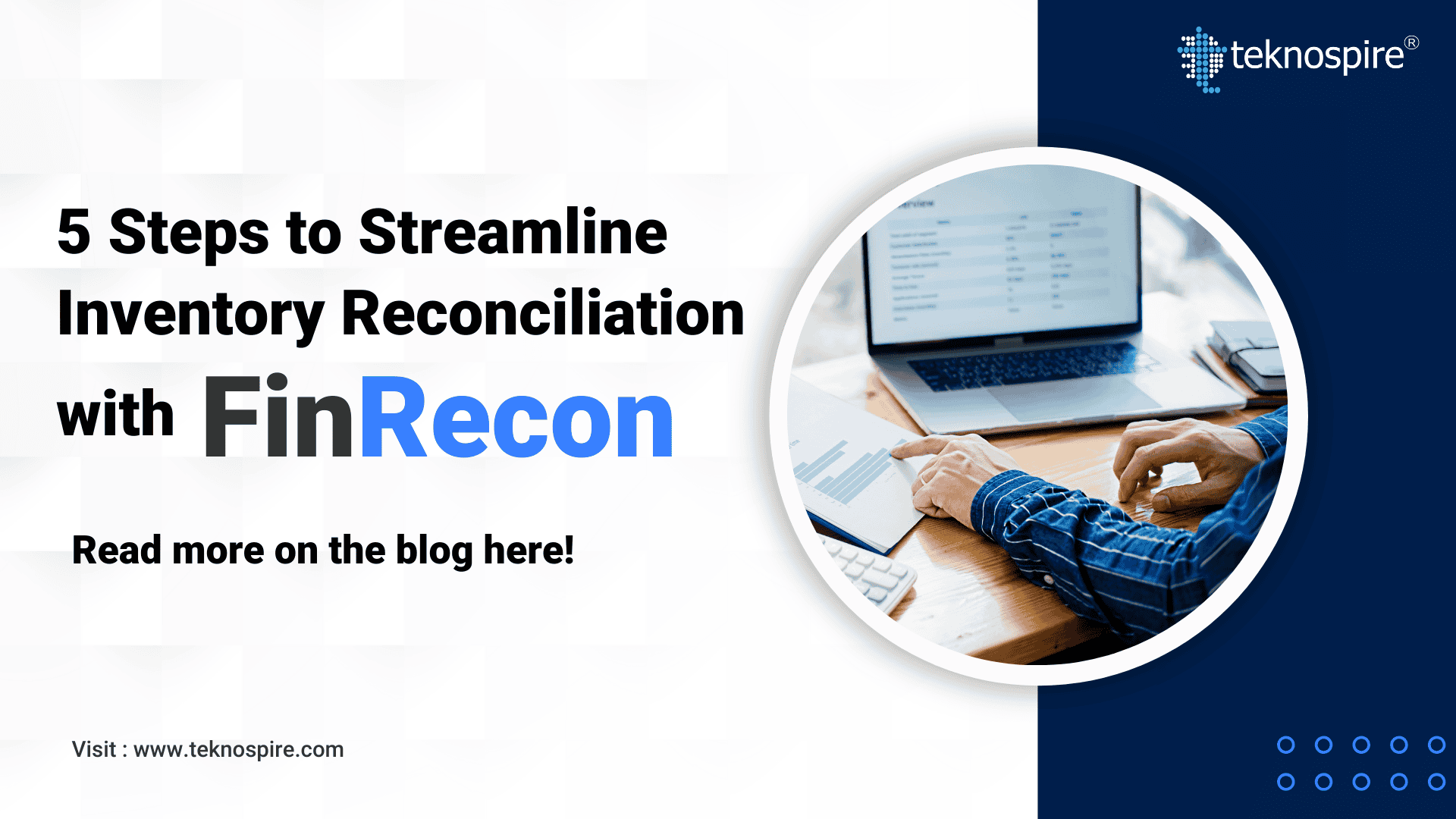Maintaining accurate inventory records is crucial for the success of any business. It often happens that the inventory counts in your records don’t align with the actual amount of inventory. Traditional inventory reconciliation methods are usually time-consuming, error-prone, and lead to inaccurate stock levels. This can result in stockouts, overstocking, and significant financial losses.
A switch to automated inventory reconciliation is needed to determine the difference between what’s in your records and what’s in your warehouse and make necessary adjustments. Advanced technologies like FinRecon can revolutionise the inventory reconciliation process.
By leveraging AI and automation, FinRecon streamlines the entire process, from data collection to analysis, enabling businesses to gain better control over their inventory and make informed decisions.
Step-by-Step Guide to Streamlining Inventory Reconciliation with FinRecon
Reconciliation with FinRecon is now much simpler and smarter. These guidelines will help you execute inventory reconciliation in a much easier way than before:
- Data Import & Preparation:
The journey begins with seamless data integration. FinRecon seamlessly imports data directly from the Database or via APIs, Files like Excel, CSV or PDF, and extracts and reads files from emails. This data is then meticulously prepared for reconciliation by cleansing and standardizing formats, ensuring accuracy and consistency. - Physical Inventory Count:
FinRecon facilitates efficient physical inventory counts. It is an inventory management software that can guide your team through the counting process, minimizing errors and ensuring comprehensive coverage. - Data Reconciliation:
FinRecon leverages AI-powered algorithms to automatically compare physical inventory counts with the business’s system records. This enables quickly identifying discrepancies, such as stockouts, overstocks, and damages, by providing real-time alerts. - Discrepancy Analysis & Resolution:
The inventory reconciliation software helps businesses analyze the root cause of discrepancies. Is it due to theft, damage, or inaccurate ordering? It provides valuable insights to help you understand the underlying issues and implement corrective actions. - Reporting & Analysis:
FinRecon generates comprehensive reports and dashboards that provide valuable insights into your inventory performance. Track key metrics, identify trends, and gain a deeper understanding of the business’s inventory movements.
Benefits of Automated Inventory Reconciliation
It is important to learn the advantages of utilising an inventory management solution like FinRecon and what exact benefits can be extracted from the platform:
- Increased Accuracy: Streamlining inventory reconciliation minimizes errors and ensures accurate inventory counts and records. One can have full visibility into real-time inventory reports of the business.
- Improved Efficiency: Streamline the reconciliation process and save valuable time. Businesses can perform and complete reconciliations much faster with customizable reconciliation rules.
- Enhanced Visibility: Gain real-time insights into inventory levels and performance. Real-time comprehensive business dashboards and purpose-built reporting showcase visibility into reconciliation status, timeliness, and quality.
- Reduced Costs and Risks: Minimize losses due to stockouts, overstocking, and shrinkage. The resources can strategise and shift focus towards exceptions and adjustments rather than manual inventory reconciliation.
- Better Decision-Making: Businesses can make informed decisions about inventory control, ordering, production planning, and pricing.
Why Choose FinRecon for Accurate Inventory Control and Management?
FinRecon is an effective AI and ML-based solution with OCR capabilities and advanced algorithms for businesses to enable end-to-end automation of inventory reconciliation. Businesses can opt for this platform as –
- They can integrate, transform and qualify data for effective reconciliations with FinRecon.
- They can manage operational risk at every level to prioritize and track.
- External and internal auditors can view signoffs, comments, and supporting documents, including the time and date stamps.
- One can drive faster actions with alerts, workflow & shared ledgers with this inventory control software.
- They can make smarter decisions with dashboards.
Improving Inventory Management: The Simpler & Easier Way
By leveraging the power of FinRecon, businesses can streamline their inventory reconciliation process, improve accuracy, and gain a competitive edge. With real-time insights and automated workflows, the platform empowers businesses to make data-driven decisions and optimize their inventory management strategies.
Ready to revolutionize your inventory management?
Schedule a demo today and experience the power of FinRecon.
Frequently Asked Questions
What is inventory reconciliation?
Inventory reconciliation is the process of comparing the physical inventory count of goods in stock with the recorded inventory levels in the business’s accounting system. This crucial step helps identify discrepancies between the actual stock and the recorded data.
How to do inventory reconciliation?
Simple steps for inventory reconciliation are:
1. Physical inventory count and data collection of all inventory items in the warehouse.
2. Compare the physical count data with the inventory records as per accounting system.
3. Analyze the data to identify any discrepancies between the physical count and recorded levels.
4. Investigate the cause of discrepancies, such as theft, damage, or errors in data entry.
5. Adjust inventory records to reflect the actual physical count.
6. Maintain proper documentation of the entire reconciliation process.
Why is inventory reconciliation important?
Inventory reconciliation plays a critical role in:
1. Accurate Financial Reporting
2. Better Cash Flow Visibility
3. Enhanced Decision-Making
4. Fraud Prevention
5. Improved Customer Service
6. Regulatory Compliance
What is a stock reconciliation?
Stock reconciliation is a specific type of inventory reconciliation that focuses on reconciling the physical count of a particular stock item with the recorded inventory levels for that specific item. It helps identify discrepancies related to that particular stock item, such as stockouts, overstocks, or damages.
